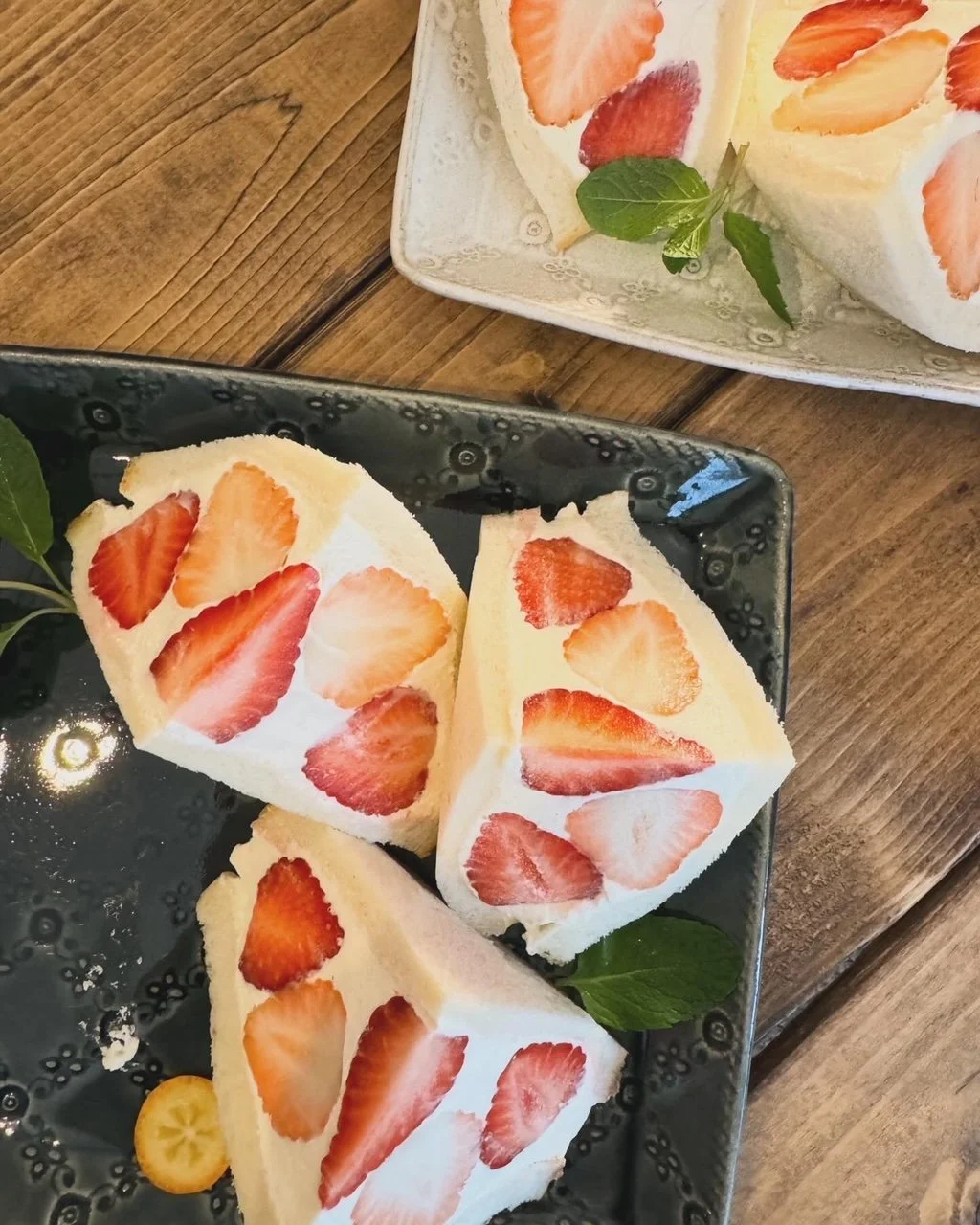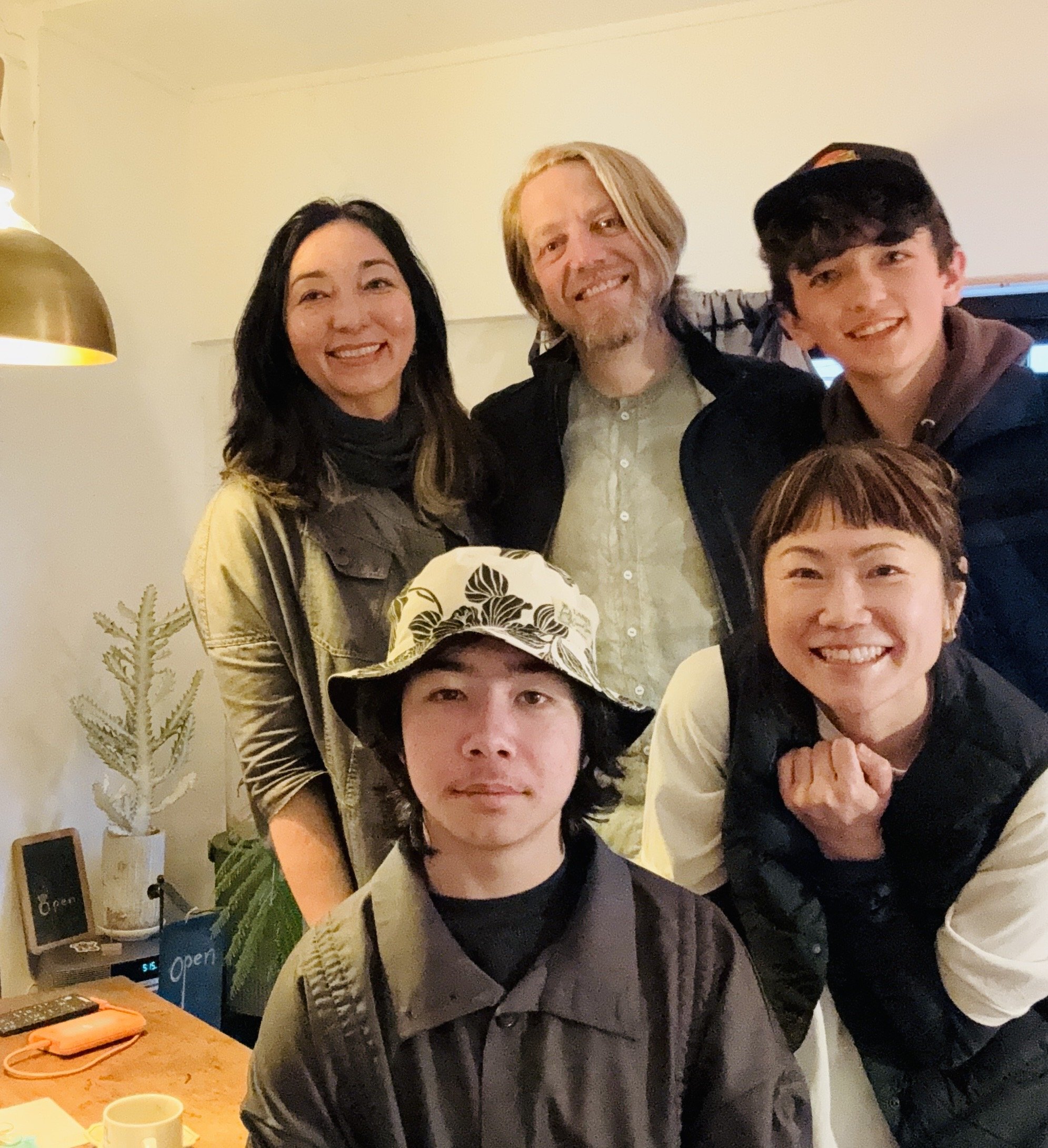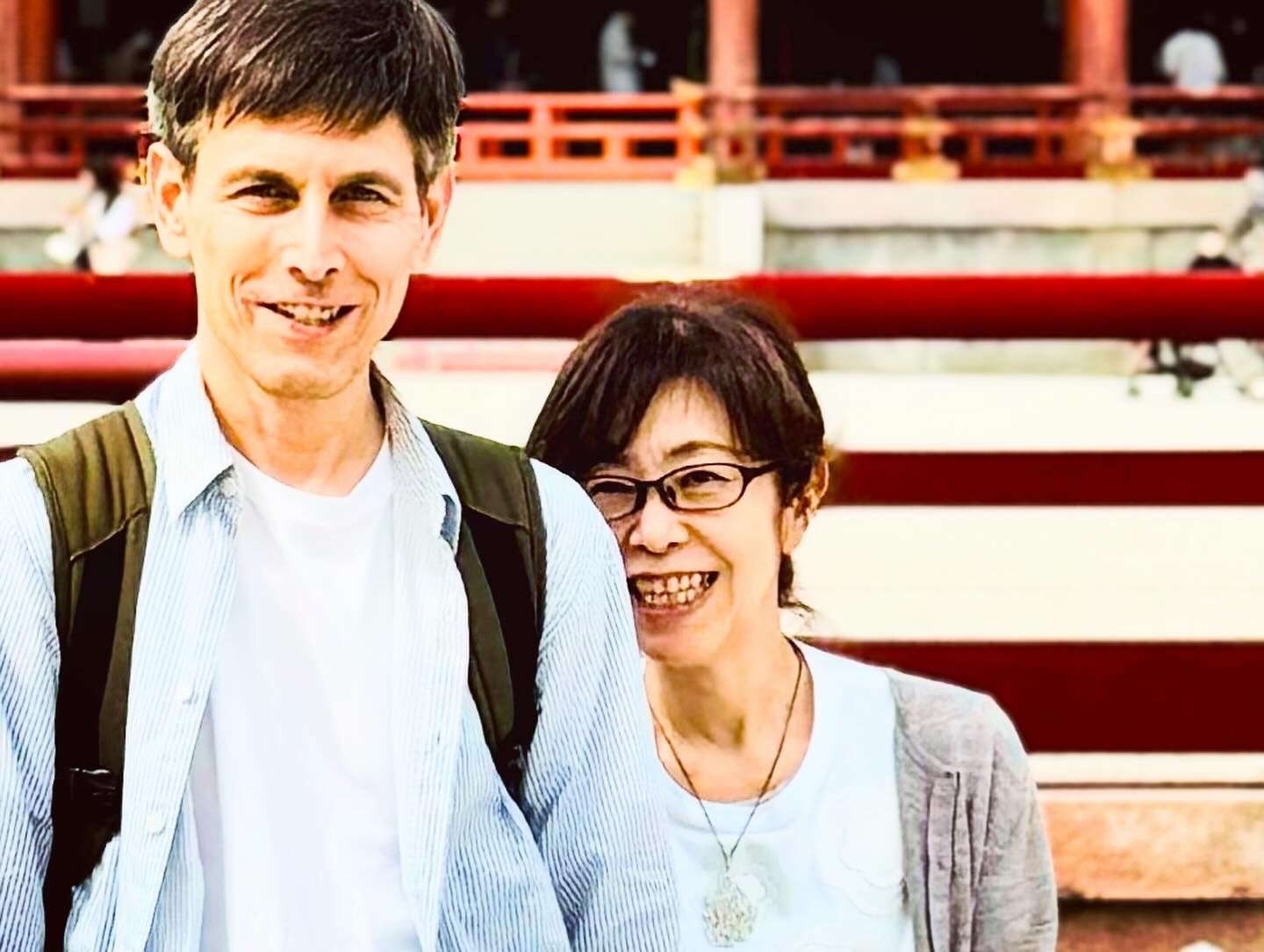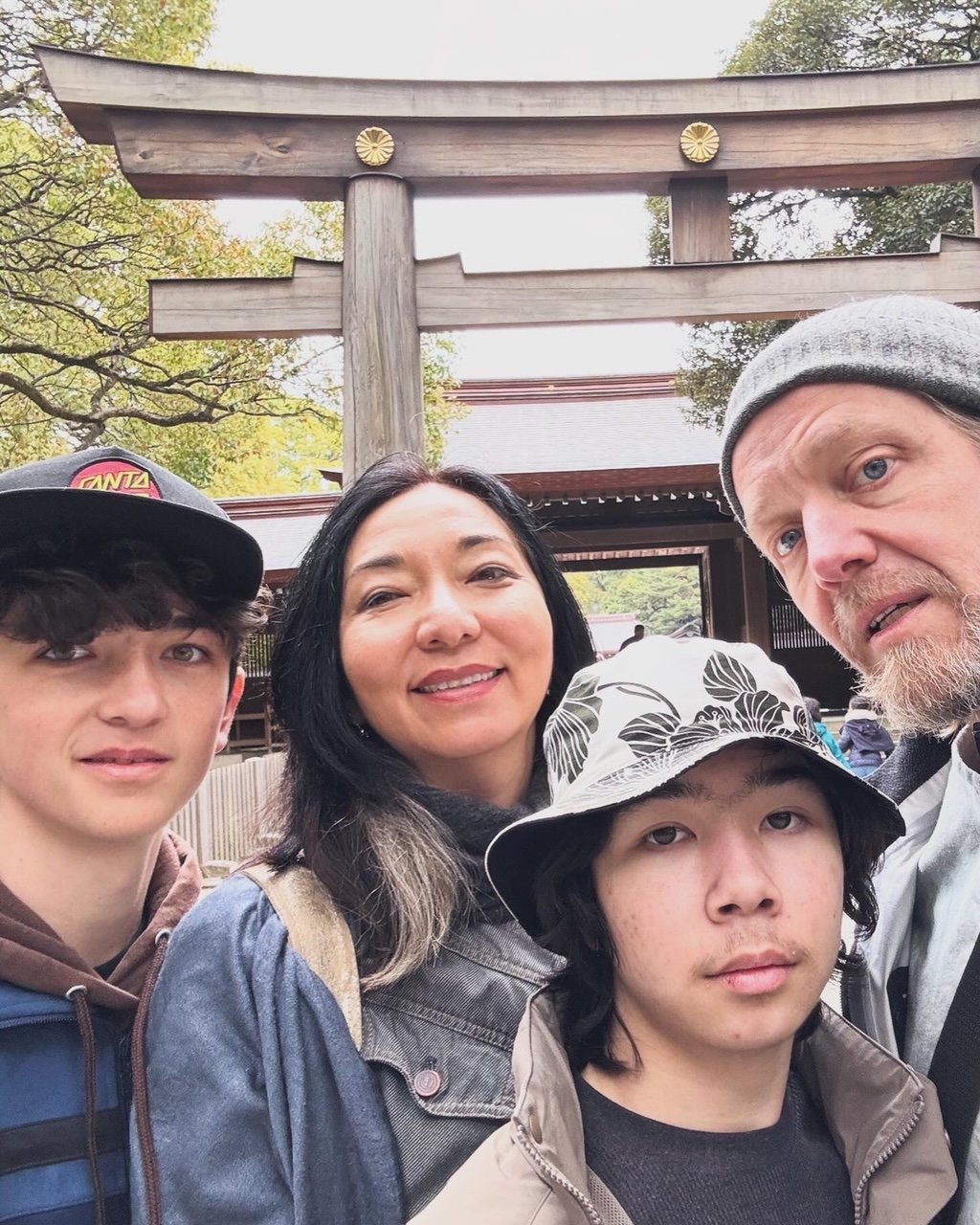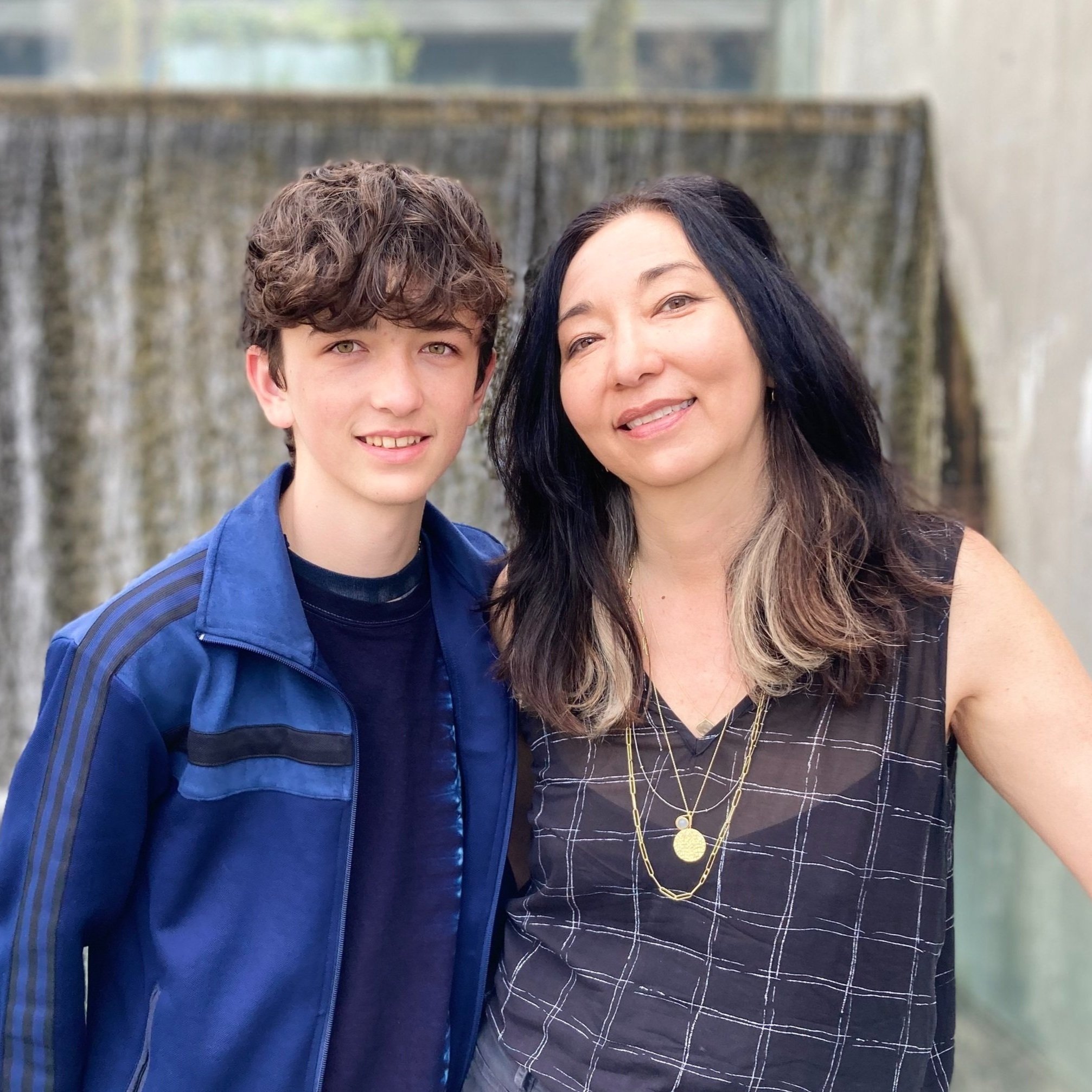TRAVEL NOTES FROM JAPAN
SHIBUMI: Decoding Japan's Green Grass
Did you know Japanese will meticulously tweeze weeds from their grass?
In Japan I found:
High standards are expected
It is respected to excel and focus on mastering a single skill
Kindness and cleanliness are required
Serenity is cherished
Small rituals, such as gift-giving, connect people
Below are a few of my favorite things I did on my travels:
My favorite city in Japan is Kyoto, so let's start there. The city's scale leaves lots to do with tons of crafts to explore as well as the tranquility of visiting all the shrines/temples. Then, add the food and the people - this city left me with such aesthetic delight!
Kyoto Museum of Craft & Design, Kyoto.
This museum offers a peek into all traditional Japanese crafts. It has an elegant, colorful display and explains their history. The exhibitions highlight a few contemporary makers. There are interactive demos and a sweet gift shop with many things you'll want to pick up. It's smallish scale is a good starting point to get you oriented to Kyoto and focus on what crafts you want to seek out.
Aizenkobo Indigo Workshop , Kyoto
I love dying fabric and have a soft spot for indigo; Its color comes from a specific soil. Utsuki san, the owner of Aizenkobo, personally inspects the best indigo for his workshop. He told me there used to be many indigo growers, but now there are only five in Tokushima and one in Hyogo. Natural dyes give stability and strength, but where as chemical production results fade over time. The natural dye doesn't mix with water so it doesn't wash away the color - it just improves over time. For cotton, the fabric must be dipped 100 times for the dye to reach the right color and quality, while it is 200 times for silk.
In addition to the gift shop in the front, the store has a special room in the back for custom clothing, pillows, norens, etc. If you visit, be sure to ask to see the dye studio.
Biking around Kyoto.
My favorite spot was alongside the Kamo River, where the cherry blossoms were in full bloom. The city is very flat and set up in a grid making it easy to get around. There is a narrow bike pathway, and you can see the whole city. I loved getting out early and seeing the activities by the river. People playing music, picnicking, studying, fishing and kids jumping on the stones across the river. Bring a bento box and sit by the river. Our hotel easily arranged for bikes to be brought to the hotel. It is very safe to put a simple lock on the bike and run into shops to explore. Just be careful where you park. You can often pull up to a side of business and leave your bike, but they also have very inexpensive bike lots in busier areas. You pull your bike up and it locks in your front wheel. When you return, you pay around 100 yen to get it out at the coin-operated machine.
There is so much good food in Kyoto, I'll share a few I liked.:
Woven for an atmospheric coffee shop with pour-overs, a long bar, and a few sweets. (small)
Mimio みみお was near Woven, and we popped in there for a bowl of ramen. They seemed to love American rock and roll, and the vibe was light in the atmosphere. Their clients seemed casually hip. I'm sure there are many good ramen shops. I'm just mentioning this if you find yourself at Woven and want a quick bowl of ramen.
Chrome Natural Wine Life has lovely wines, and the people are kind. After having so much saki, I was in the mood for a glass of wine. We popped in here, and I liked their inspired food, too. We sat at the bar, and it was perfect for a casual but nice dinner. We didn't have a reservation, but many people who stopped in did.
Inui is a fusion dinner. We went here with a group of friends. You pick out the appetizers/mains, and they scale the quantity based on how many people are at the table. The food was delicious and innovative, and the atmosphere was cozy and modern. Make a reservation.
Many restaurants in Japan only have room for customers with reservations, so it's good to plan ahead.
Kiso Valley: Walking the Nakasendo Trial
I liked getting out to the mountains. We spent three nights in the Kiso Valley and hiked between a few towns on the old roads the Samurai once used to travel between Kyoto and Tokyo. You can make it a hiking trip or do a couple of day walks. We splurged and stayed outside Kisofukushima, Nagano, at Tsutaya Tokinoyado Kazari, a beautiful Ryokan with an onsen to ponder life. I enjoyed this little stop up in the hills of the Kiso Valley, where there was still snow and they had both indoor and outdoor tubs. The food was included and was top quality—really an exceptional experience. I enjoyed walking through Kiso-Fukushima one day and then checking out the lacquerware stores the next day. The second day, we hiked between Magome to Tsumago. There was a cute tea house where you could stop in for a donation and meet other travelers. Keep an eye out for small wagashi shops: I had a dried persimmon with a chestnut cream treat that was to die for. I wish I'd bought a pack to bring home. The Ryokans on the trail are often full. I recommend getting off the beaten track and exploring some of the Ryokans in the hills. You can store your luggage in a train station locker between towns.
We spent our last night in Nakatsugawa. While we didn't see much of the city because we were hiking, I liked the Shabu-shabu place we found called Aoygi. An older Japanese man and his family happily practiced their English and bought us shrimp croquettes, while a grumpy Japanese man and his wife efficiently served us. It felt like a place that had been around for a while.
Osaka
I'd wanted to visit another major city in Japan. We only spent a few nights here, so my impressions were brief. The highlights were the park by the Osaka castle, a walk at night by the river, and businessmen/women hanging out with colleagues by the river drinking beer on their blue tarps. Even though the city is older than Tokyo, the architecture is mostly modern with lots of malls, pachinko parlors, and the largest arcade in Japan. So there is that flavor. I recommend a day trip to see Himeji Castle, an hour or so train ride away, and for food find some Okinomiyaki and Tokoyaki.
I was there to visit artist/jeweler Liisa Hashimoto. When I asked her about the best Okinomiyaki, she said they were all good. We followed some businessmen into a crowded place and had a good meal. Their after-work banter and beer drinking were also a cultural sight to see.
The train ride to Kyoto is only an hour long, so Osaka can easily be visited while staying in Kyoto.
Last but not least, Tokyo. This massive city is just too much. I'd rather live there than vacation. There is so much to do that one can barely scratch the surface. But a whirl through the city's energy can be fun, too. Let's first address the jet lag. It is bad. So don't fight it. Get up early and head to the new fish market.
It opens at 5 am so that you can have king crab or sushi for breakfast. Getting there by 7 am is best since the crowds start around 8 am. We followed some Japanese down a small alleyway, and they were all lined up for uni. I like uni but wasn't sure if that was all I wanted to eat it at 7 am. Following the pathway further, I found a sweet, serene sushi bar, which we returned to the next day. We tried the freshly cooked Tamago, the grilled King Crab on our first day, and some mochi with strawberries and ended up at "John Lennon" favorite coffee spot. ALL DELICIOUS! Up early, we visited twice!
I can recommend this sushi refuge: Tsukiji Itadori Bekkan. We ended up sitting by one of Rintaro's investors in San Francisco, and she said she came here every morning for breakfast when she visited Tokyo.
Team Labs Borderless If you have kids, this was a fun experience of digital art and interactions. It makes for some amazing photos and they have different installations all over Japan, too.
Koenji Neighborhood. While I can't say I experienced much in this neighborhood, it is one I'd like to return to. It is called the Retro Hub for ex-punks and a neighborhood for creatives. I was visiting an old friend, Sayumi Yokouchi, and her studio, We met and had the best Fruit Sando—strawberry sandwiches at Jules Verne Coffee. You can find them all over Japan, but these were especially good. The walk back to the train station was under the railway and the roll-up doors were opening. Looked like there were fun bars and restaurants.
I enjoy thrift store shopping in Japan and hear this neighborhood is full of them. One tip is that a big chain called Second Street is vast and has everything. It's an excellent place to browse and get to know Japanese brands. There are a lot of smaller, cuter shops, but many of them specialize in American wear. At Second Street, I went directly to the rack where the clothes were chained and found Issey Mikaki, Dries Van Noten, Yoji, and other Japanese designers I did not know. It's still a bargain compared to paying full retail. The boys loved the sneaker selection!
Other food places I recommend:
The Japanese love their chicken, and you can eat every part! This Yakatori place made it extra special, and I enjoyed the experience a lot: Nakameguro Iguchi. This group of restaurants has a few, and I hope to return to the one specializing in tempura. Reservations are required.
Pork Tonkatsu- this was yummy. Nishiazabu Butagumi, reservations requested.
This is only my second trip and visiting with friends and artists who lived there along the way certainly made this trip memorable. Ivo, my boyfriend’s son, has very intentional dreams of moving there, so I'll happily return, hopefully sooner than later.






































